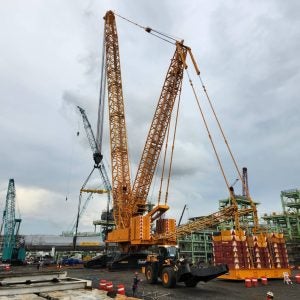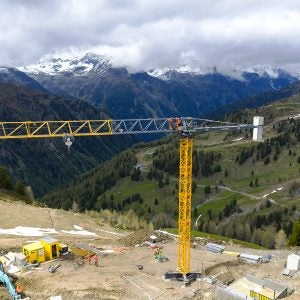Construction activity in cities around the world increased significantly over the last few decades, and so did the number of high rise buildings. Jobsite space became a luxury and speed of operation became central, leading to the increased popularity of certain crane types and the evolution of technologies to boost efficiency.
Is Covid-19 capable of reversing the urbanisation trend? London has been witnessing continuous population growth for decades, with numerous new apartment blocks recently built or currently under construction in many (if not all) parts of the city.
However, PricewaterhouseCoopers’ 2021 UK Economic Outlook reported that they expect this year London’s population to decline for the first time in the 21st century. “Covid-19 has fundamentally changed the way we view cities. We anticipate that in 2021, a shift away from city-living is likely to both increase the number of people moving out of the capital, and decrease the number of people moving in.”
UK estate agents Hamptons claim that it is now slower to sell a home in London than anywhere else in the country. They said that nationally the average number of days between when a property is first marketed and when it goes under offer, dropped between January and February from 63 to 45 days. Every region recorded a fall, apart from London were the figure increased from 62 to 82 days.
Lockdown is the main factor according to studies as well as people interviewed by UK media influencing the decision to flee the metropolis. A big proportion of London’s population, including myself, lives in flats. Due to the lockdown measures, people have been spending disproportionally more time at their flats than they used to. This has made people appreciate space more than before, leading to an increased demand for bigger properties, especially houses with gardens, and greener surroundings.
Homeworking also has had an impact, with less people having to commute to work and many anticipating that they will continue to work from home in the future. The search for bigger properties can also be linked to some looking to set up a home office.
Hamptons said: “The prospect of homeworking more regularly has also meant that London leavers are moving further than ever before. The average (median) distance moved by a Londoner buying outside the capital hit 40 miles for the first time in over a decade, up from just 28 miles during the first three months of the year.”
The impact of Covid-19 on personal finances may also have been a reason for some deciding to switch away from metropolitan life. Rent and housing prices are significantly higher in London compared to other parts of the country.
Could counterurbanisation become a long-term trend in the UK or be witnessed in other parts of the world as well? If yes, we could see certain crane types gaining market share from others.
Sotiris Kanaris, Editor
sotiris.kanaris@cranestodaymagazine.com






